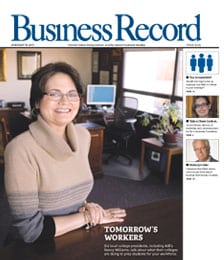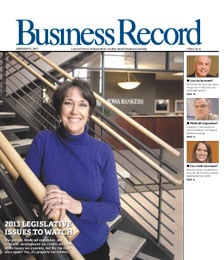Five funds to help your 401(k) catch up

Dear Mr. Berko:
I just turned 50 and I want to know how much I can contribute to my 401(k) this year, next year and in 2006. I have been in the aircraft- and yacht-leasing business for 22 years, earning a modest six-figure income. I’ve recently gone through a difficult divorce and my ex-wife took just about everything I own, including my coin collection, my individual retirement account, our stocks, our house, the company-sponsored retirement plan and a small vacation home we spent nine years building together. I thank the Lord that she did not ask for alimony.
So I’m beginning a new 401(k) and must fund it “to the max” because I really have nothing left for retirement. I’d also like your recommendations for common stock for my new 401(k). I only have 15 to 17 years until I retire.
D.O., Syracuse, N.Y.
Dear D.O.:
In 2004, you can contribute as much as $13,000 to your 401(k) plan. But if you turn 50 this year (even if your birthday is Dec. 31), you can make an extra $3,000 contribution for a total of $16,000. My accountant calls this a “catch-up contribution.” In 2005, you can contribute as much as $14,000, but because you’re over 50, you can make an additional $4,000 “catch-up contribution” for a total contribution of $18,000. And in 2006, anyone can make a $15,000 contribution to their 401(k), and because you’re over 50, you can add another $5,000 as a “catch-up contribution” for a total of $20,000.
Meanwhile, I’ve been told by several sometimes-reliable sources that Congress really wants to increase the contribution ceiling “more and faster,” so look for some possible changes in these numbers next year.
Assume that your contributions over the next 17 years will average $20,000 annually and that you can earn 7.5 percent on your 401(k) account each year. When you retire your leasing license, that $340,000 in contributions should be worth about $700,000.
Notice I said “assuming you can earn 7.5 percent.” There was a time, many years ago, when I believed I could comfortably select individual stocks with a 15- to 17-year horizon. The fact that no one really knew anything about the future gave me a tremendous amount of confidence in my selections. But I learned that it’s a heck of a lot easier to get older than to become wiser. I thought companies such as Standard Oil, US West, Utah P&L, Chase Manhattan Bank, General Tire, Bethlehem Steel, New York Central, American Can, Interstate Bakeries and General Telephone would always be prominent in investors’ portfolios. Change seems to be the only constant in this business of investing.
So, I’m going to recommend that you put this money into the following five actively managed mutual funds, each of which seems to have successfully grown with the changes. Each time you make a contribution, just divide the dollar amount evenly among these five.
American Funds Capital Income Builder (CIBFX) seeks current income and capital growth and may invest 40 percent of its assets in foreign securities. Its 15-year annualized total return is 11.32 percent.
Calmos Growth & Income (CVTRX) is a convertible bond fund with a 15-year annualized total return of 13.5 percent.
Franklin Income A (FKINX) is a balanced fund with a diversified portfolio of debt and equity securities. Its 15-year annualized total return is 10.3 percent.
Van Kampen Comstock A (ACSTX) is a growth and income value fund that invests primarily in large-cap stocks. Its 15-year annualized total return is 12.2 percent.
Oppenheimer Global A (OPPAX) invests in common stock and convertibles of U.S. and foreign companies. Its 15-year annualized total return is 11.03 percent.
These five funds will provide you with exceptional management, broad sector diversification, convertible, corporate and high-yield bonds, large-cap stocks, value stocks, high-income issues and foreign securities. I’ve given you a lot of wiggle room here, and I hope these funds will provide you a total return over the next two decades that’s better than the projected 7.5 percent.
Now if this 401(k) is worth $700,000 when you’re 67, it should provide you an income between $40,000 and $45,000 annually with zero to minimum principal invasion. Your Social Security — if it’s here in 17 years — could pay you about $35,000 a year (assuming a 3 percent inflation rate). Frankly, I’m not sure that $75,000 to $80,000 in yearly income will be enough to live on 17 years hence. Therefore, I suggest that you give some serious thought to saving more than $20,000 a year and additional serious thought to working part-time for the rest of your life.
Please address your financial questions to Malcolm Berko, P.O. Box 1416, Boca Raton, Fla. 33429 or e-mail him at malber@adelphia.net.







